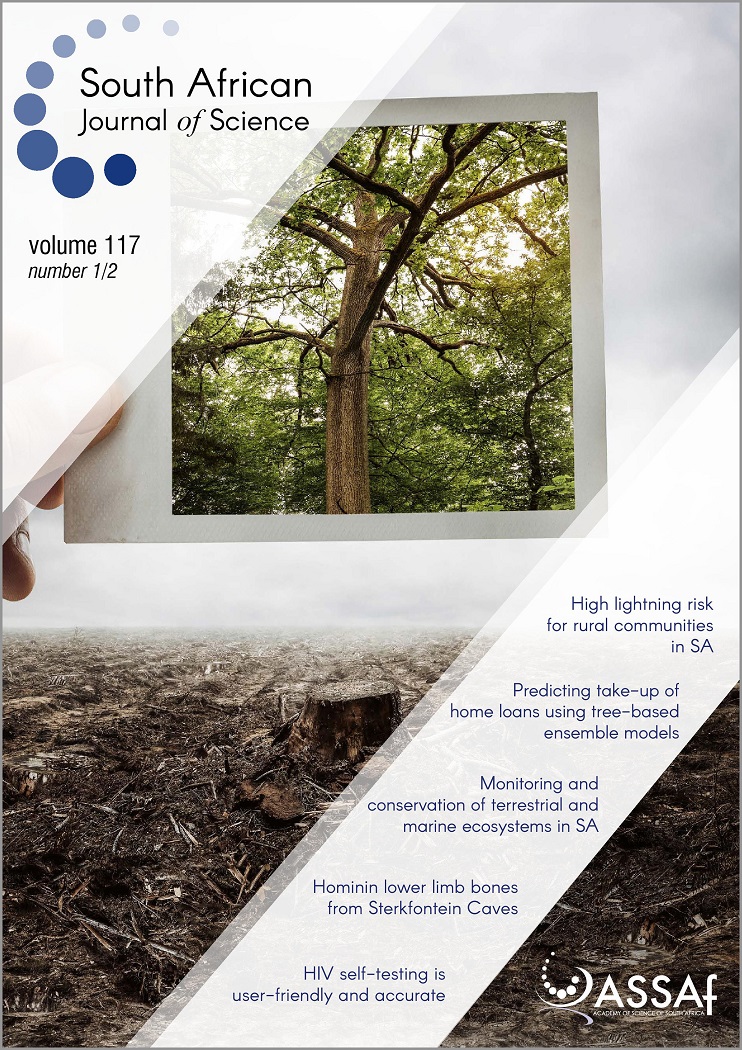Lightning monitoring and detection techniques: Progress and challenges in South Africa
DOI:
https://doi.org/10.17159/sajs.2021/7020Keywords:
climate, climate change, extreme weather, lightning activity, rural communitiesAbstract
Globally, lightning causes significant injury, death, and damage to infrastructure annually. In comparison to the rest of the world, South Africa has one of the highest incidences of lightning-related injuries and deaths. The latest available lightning detection techniques and technologies are reviewed and include current research in South Africa and South Africa’s lightning detection challenges. Technological advances have contributed towards improving lightning detection and monitoring activities in many countries. South Africa has made considerably more progress in the field of lightning research than other African countries and possesses one of the three ground-based lightning detection networks in the southern hemisphere. However, despite these developments, rural communities in South Africa, and indeed in Africa, remain vulnerable to lightning, the occurrence of which is predicted to increase with climate change. A large proportion of the population of African countries resides in rural areas, where citizens participate in subsistence farming, and built infrastructure is not lightning safe. We recommend a call for the integration of indigenous and scientific knowledge as well as for the development of a participatory early warning system. Investigations into determining the most effective way to utilise existing monitoring networks – but with warning dissemination to rural communities – are also required. Lastly, future research on the development of lightning-safe rural dwellings or shelters, especially in lightning prone areas, is needed.
Significance:
- Climate change projections of increases in lightning incidence highlight an increased risk for vulnerable communities.
- There is a lack of literature focusing on lightning detection within rural communities.
- Technological advances now allow for better dissemination of lightning information and early warning within rural communities.
- The South African Lightning Detection Network is operational at a national level; however, there is no dissemination at a local level.
- There are currently no recommended design guidelines for informal dwellings and no safety protocols for rural communities.
Downloads
Published
Issue
Section
License

All articles are published under a Creative Commons Attribution 4.0 International Licence
Copyright is retained by the authors. Readers are welcome to reproduce, share and adapt the content without permission provided the source is attributed.
Disclaimer: The publisher and editors accept no responsibility for statements made by the authors
How to Cite
- Abstract 1356
- PDF 2073
- EPUB 178
- XML 253
- Supplementary Material 54













.png)